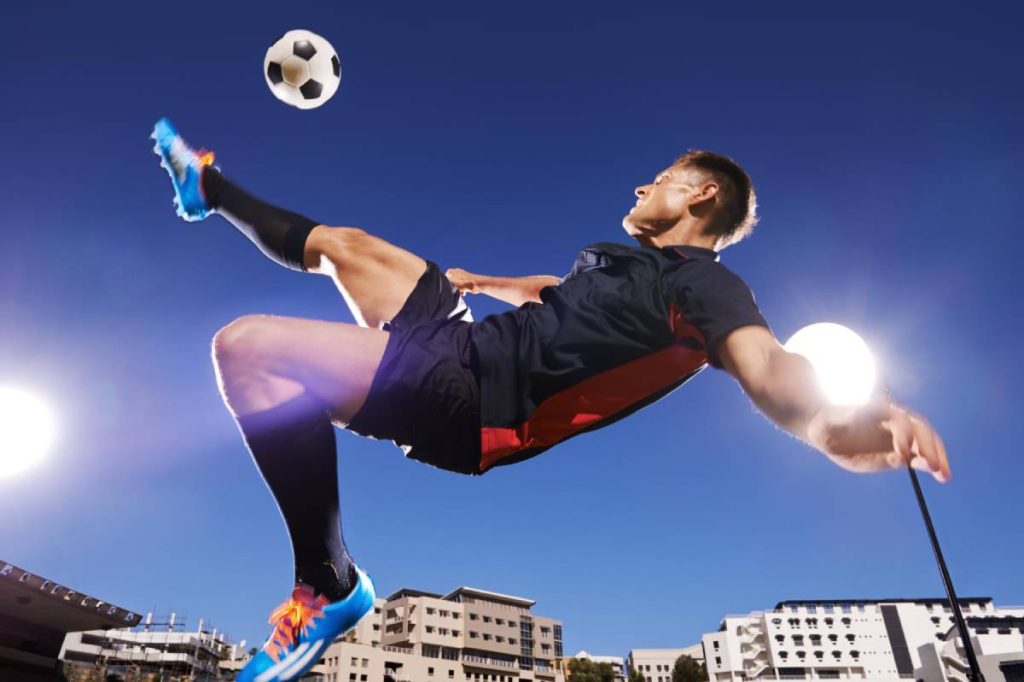Naomi Osaka French Open 2025 marked a pivotal yet challenging moment for the four-time Grand Slam champion, as she faced an early exit following a tense defeat to Paula Badosa. Wearing her iconic ‘Sakura’ themed outfit, Osaka struggled with clay court blisters that disrupted her rhythm, echoing struggles faced by athletes adapting to Paris’ red terre battue. Despite Patrick Mouratoglou’s coaching guidance—which previously propelled Serena Williams to dominance—Osaka admitted her performance fell short, hinting at uncertainties about her grass court plans ahead of Wimbledon. The match, marred by physical discomfort and unforced errors, underscored the toll of high-stakes tennis, while her post-match remarks blended frustration with trademark humor about her coach’s expectations. As fans speculate on her 2025 season trajectory, the French Open exit reignited debates about balancing innovation (like her bold fashion statements) with the mental resilience required to reclaim her title as a Grand Slam champion.
The 2025 French Open witnessed a stark contrast between Naomi Osaka’s vibrant cherry-blossom inspired attire and the grueling physical challenges posed by clay court blisters, highlighting the duality of her career journey. While her Patrick Mouratoglou-coached strategy aimed to replicate past successes, the match revealed vulnerabilities familiar to Grand Slam contenders facing repetitive injury patterns. As analysts dissect her post-tournament statements on future grass court readiness, the narrative shifts toward adaptive coaching methodologies and athlete durability—key themes shaping discussions about her comeback prospects. Beyond her on-court battles, Osaka’s candid reflections on managing expectations under elite mentorship have sparked conversations about player-coach dynamics in high-pressure environments, positioning her narrative as a case study in modern tennis resilience.
Naomi Osaka French Open 2025: A Defining Challenge for the Grand Slam Champion
Naomi Osaka’s early exit at the 2025 French Open marked a pivotal moment in her career, as the four-time Grand Slam champion fell to 10th-seeded Paula Badosa in a match defined by resilience and setbacks. The Sakura-themed outfit, designed to honor her heritage, became a symbol of her determination, yet it couldn’t mask the physical struggles she faced. Blisters from the clay court’s abrasive surface persistently disrupted her play, echoing issues first noted during the Rome tournament.
The loss highlighted Osaka’s ongoing challenges in adapting to clay court dynamics. Despite her tactical adjustments, the friction-induced blisters forced her to clip her nails mid-match—a distraction that underscored the mental and physical toll of Grand Slam pressure. Fans and analysts alike questioned how her preparation aligned with Mouratoglou’s guidance in the lead-up to Roland Garros.
The Sakura-Themed Outfit: Naomi Osaka’s Bold Fashion Statement at Roland Garros
Osaka’s ‘Sakura’ outfit, inspired by cherry blossoms and cultural symbolism, drew global attention as a blend of athleticism and artistry. The design aimed to celebrate her Japanese roots while aligning with the tournament’s aesthetic. However, the vibrant outfit contrasted with her on-court struggles, sparking debates about her prioritization of style over substance amid high-stakes competition.
Fashion analysts praised the outfit’s innovation, but critics argued it overshadowed her performance. The juxtaposition of her visual impact versus her physical limitations on the clay courts raised questions about her focus and readiness for major tournaments. This duality underscored her evolving identity as both a tennis icon and a style icon.
Clay Court Blisters: How Physical Struggles Impacted Naomi Osaka’s Performance
The recurring issue of clay court blisters plagued Osaka’s 2025 campaign, with the abrasive surface exacerbating her foot and hand injuries. Mid-match nail-clipping revealed her desperate attempts to mitigate discomfort, a tactic that drew both sympathy and scrutiny. Medical experts noted that clay’s texture uniquely affects athletes’ skin, with prolonged friction leading to blister formations that disrupt rhythm and confidence.
While Osaka’s team explored adaptive footwear and taping solutions, the problem persisted throughout the tournament. This physical barrier, coupled with mental fatigue, contributed to her loss. The situation mirrors past Grand Slam struggles, prompting calls for more player-centric court material innovations to protect athletes’ health.
Patrick Mouratoglou Coaching: Navigating Post-Match Comments and High Expectations
Osaka’s post-match quip about Mouratoglou moving from coaching Serena Williams to her own struggles became a viral moment, blending humor with frustration. Mouratoglou’s role in her preparation faced scrutiny, as fans debated whether his strategies adequately addressed her clay court weaknesses. His history with Williams set a high benchmark, intensifying expectations for Osaka’s performance.
Analysts emphasized Mouratoglou’s dual challenge: balancing Osaka’s mental resilience and technical adjustments on clay. His methods were previously praised for Williams’ longevity, but Osaka’s unique playing style and physical vulnerabilities require tailored solutions. The duo’s post-match banter hinted at a candid, evolving partnership amid public pressure.
Grand Slam Champion Struggles: Naomi Osaka’s Post-Match Reflections
Osaka’s candid admission—’I hate disappointing people’—revealed her internal conflict as a high-profile athlete. Her comments underscored the psychological burden of defending past achievements, particularly in a sport where consistency is paramount. The emotional toll of early exits and physical setbacks has become a recurring theme in her career narrative.
The French Open defeat reignited discussions about managing the ‘Grand Slam Champion Struggles,’ where past glories amplify present expectations. Osaka’s vulnerability in admitting frustration humanized her, resonating with fans who recognize the mental challenges elite athletes face. Her remarks also signaled a shift toward transparency in post-match interviews.
Naomi Osaka Grass Court Plans: Uncertainty Ahead for Wimbledon 2025
Osaka’s post-French Open comments about grass court plans—’I wasn’t expecting to lose here’—hinted at uncertainty about her readiness for Wimbledon. The abrupt exit left her questioning whether to pivot strategies or regroup on clay. Grass court surfaces demand explosive serves and footwork, contrasting sharply with clay’s endurance needs, making this transition critical for her 2025 season.
Coaches and pundits speculate on whether Mouratoglou will overhaul her training regimen for grass, focusing on net approaches and volley drills. Osaka’s indecision reflects broader concerns about balancing recovery time with competitive pressure—a dilemma many Grand Slam champions face after injury or performance setbacks.
First-Round Controversy: Naomi Osaka’s Nail-Clipping Incident Sparks Debate
Osaka’s mid-match nail-clipping drew immediate attention, with fans and physios analyzing its implications. While some viewed it as a clever tactic to reduce friction, others criticized it as a distraction. The act symbolized her desperation to adapt during the match, exposing raw vulnerability. Officials later clarified that nail-clipping doesn’t violate rules, but it sparked conversations about player autonomy over in-game adjustments.
The incident highlighted the fine line athletes walk between self-preservation and rule adherence. For Osaka, it became a metaphor for her broader struggles: innovative yet unrefined solutions to recurring physical challenges. Critics argue this moment encapsulated her inconsistent form, while supporters saw it as a reminder of her human side beyond her Grand Slam pedigree.
The Emotional Toll: Dealing with Disappointment at the French Open
Emotional vulnerability dominated Osaka’s post-match interviews, with her public frustration marking a departure from her usually composed persona. The defeat reignited discussions about her mental health management, particularly after her 2021 mental health hiatus. Fans expressed empathy, noting the pressure of maintaining Grand Slam champion status while battling visible physical pain.
Sports psychologists noted Osaka’s candidness as a positive step toward destigmatizing athlete vulnerability. However, her remark about Mouratoglou—’Sorry if I get fined for swearing’—revealed the tension between emotional release and professional decorum. This duality framed her exit as both a personal and public relations challenge.
Comparing Coaching Styles: Mouratoglou’s Approach with Osaka vs. Serena Williams
Mouratoglou’s dual legacy as Serena Williams’ former mentor contrasts sharply with his current partnership with Osaka, revealing differing coaching priorities. While Williams thrived under his guidance with technical precision, Osaka’s struggles on clay suggest a need for tailored clay-court strategies. Critics question whether his methods have adapted to her unique biomechanics and injury risks.
Comparisons between their coaching dynamics reveal Williams’ emphasis on baseline consistency versus Osaka’s need for mental resilience on clay. Mouratoglou’s challenge is clear: bridging Osaka’s Grand Slam pedigree with the tactical agility required for surfaces like Paris’ clay, which amplifies her physical vulnerabilities.
Looking Ahead: Can Osaka Bounce Back in the 2025 Grass Court Season?
Osaka’s grass court prospects hinge on addressing both physical and mental barriers. Grass courts reward powerful serves and aggressive play, contrasting with clay’s slower pace—a potential advantage if she transitions effectively. Mouratoglou’s role in designing a grass-specific rehab and training regimen will be pivotal in mitigating clay-induced setbacks.
Her ambiguous grass court plans reflect a broader uncertainty about her long-term strategy. Analysts speculate that a strong Wimbledon performance could restore her momentum, but it requires resolving the blisters issue and rebuilding confidence. The season’s remainder is now a crossroads for her career trajectory.
Frequently Asked Questions
What was Naomi Osaka’s Sakura-themed outfit like at the 2025 French Open?
Naomi Osaka wore a ‘Sakura’ (cherry blossom) themed outfit during the 2025 French Open, marking her bold fashion statement. This design incorporated floral patterns symbolizing Japan’s spring blooms, reflecting her cultural roots and signature style.
How did clay court blisters affect Naomi Osaka’s 2025 French Open performance?
Osaka struggled with blisters caused by clay court friction during her match, leading her to clip her nails mid-game. This issue, recurring since the Rome tournament, impacted her grip and shot execution, contributing to her early exit against Paula Badosa.
What did Patrick Mouratoglou say about Naomi Osaka’s coaching challenges at the 2025 French Open?
Coach Patrick Mouratoglou, renowned for mentoring Serena Williams, faced scrutiny as Osaka expressed humorous frustration: ‘He goes from working with the greatest to… this.’ Mouratoglou emphasized adjusting tactics for clay but acknowledged Osaka’s need for physical adaptations.
Why did Naomi Osaka lose to Paula Badosa in the 2025 French Open first round?
Osaka fell to 10th-seeded Paula Badosa 6-7(1), 6-1, 6-4, citing physical discomfort from clay-induced blisters and inconsistent performance. Post-match, Osaka admitted her execution fell short, stating, ‘I hate disappointing people.’
What are Naomi Osaka’s grass court plans after her 2025 French Open exit?
Osaka remains uncertain about her 2025 grass court schedule, stating, ‘I wasn’t expecting to lose here.’ Her focus now shifts to addressing physical challenges, though no confirmed plans for Wimbledon or pre-tournament warm-ups have been announced.
How did Naomi Osaka respond to criticism after her 2025 French Open defeat?
Osaka humorously acknowledged her performance struggles, even joking about potential fines for post-match comments. She prioritized accountability, stating her priority was ‘figuring out this clay court game’ over external criticism.
| Aspect | Details |
|---|---|
| Tournament Outcome | Early first-round exit; lost to 10th-seeded Paula Badosa 6-7(1), 6-1, 6-4 |
| Notable Challenges | Blisters from clay-court friction led to mid-game nail-clipping; recurring issue since Rome tournament |
| Style Statement | Debuted ‘Sakura’ (cherry blossom) themed outfit |
| Post-Match Remarks | Expressed frustration: ‘I hate disappointing people.’ Joked about coach Mouratoglou: ‘He goes from working with the greatest to… this,’ referencing Serena Williams |
| Future Plans | Uncertain about grass-court participation: ‘I wasn’t expecting to lose here.’ |
Summary
Naomi Osaka French Open 2025 saw the four-time Grand Slam champion face early elimination, falling to Paula Badosa in a dramatic three-set match. Osaka’s challenges included physical discomfort from clay-court blisters and emotional struggles, though her iconic ‘Sakura’ outfit and candid post-match humor highlighted her personality. With questions about her grass-court plans lingering, Naomi Osaka French Open 2025 marks a pivotal yet disappointing moment in her 2025 season, impacting rankings and fan expectations.



